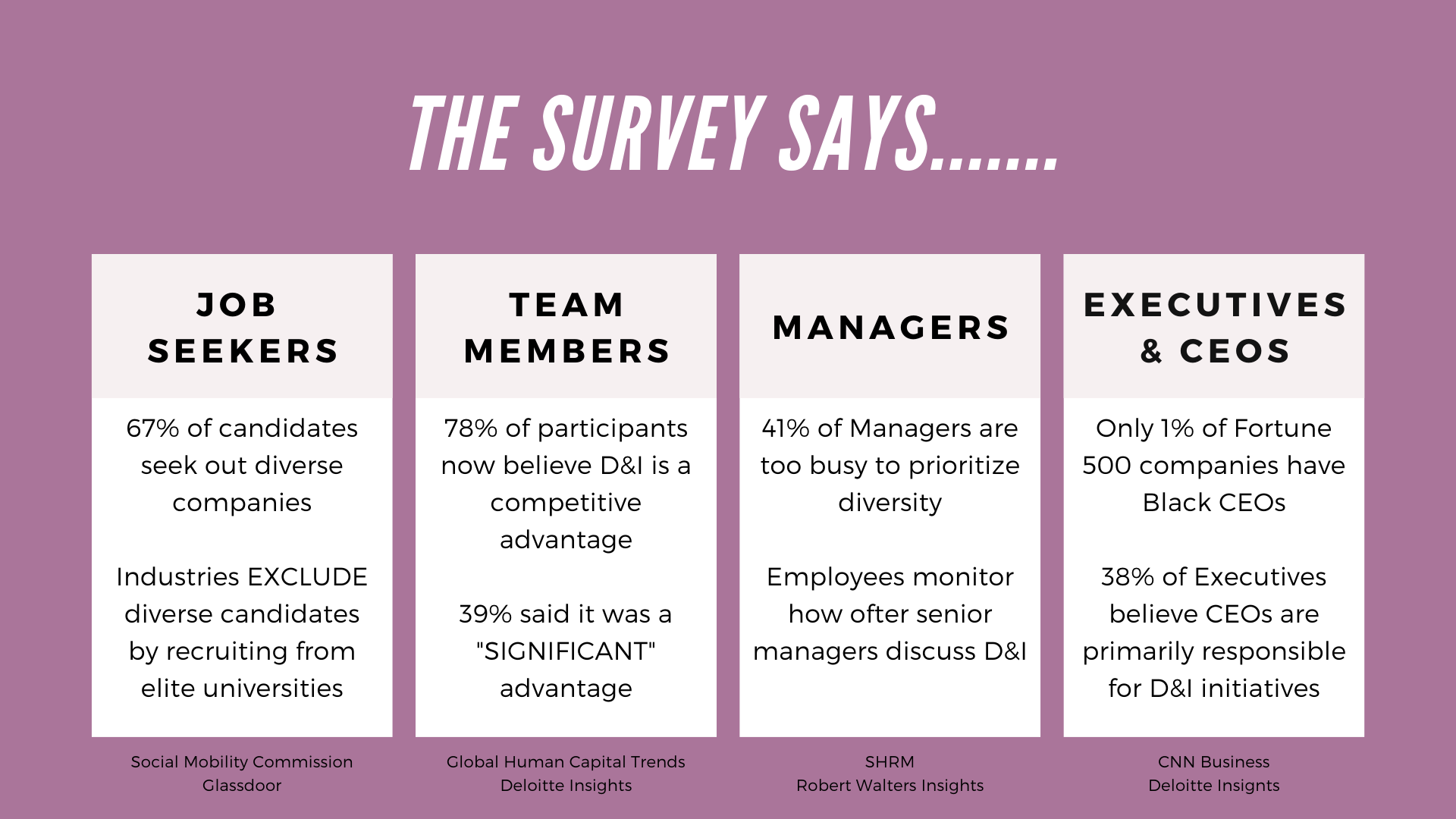Improving Organizational Equity
To truly test your organizational health in regards to diversity, inclusion and equity (D&IE), consider verifying if each phase has been incorporated in the culture of your workspaces.
In this example, this graph represents if an organization was to verify each area of workspace culture and identified there were areas of improvement within inclusion and equity. When assessing the culture of your organization, consider assessing each area separately.
Phase One (Diversity): Ensuring your organization and company is diverse (protected areas such as: gender, sexual orientation, religious affiliation, ethnicity/race)
Phase Two (Inclusion): Ensuring ALL team members are valued to include welcoming their input and ideas. Before changes are made, do you consider feedback from those it will affect from all tiers?
Phase Three (Equity): Ensuring there are equal opportunities and resources available for all. Are there truly opportunities for everyone to make it to the Executive/C-Suite levels? Is that tier diverse?
According to studies, diverse and inclusive spaces are needed and desired internally and externally.
The CEO of Salesforce, Marc Benioff is an example of a leader who identified a D&IE problem and addressed it. From 2012, he identified multiple areas within the company that needed remedies:
Lack of women representation
Gender pay gap
Unconscious bias
Lack of inclusion in hiring process - 2020 Initiative
Through a series of audits, hiring of a Chief Equality Officer and other solution based actions, Salesforce has received numerous awards to include ”Best Places To Work”.
Here are five steps to help you in making changes within your company’s culture:
It was two leaders that informed the Salesforce CEO of their concerns. Obtain feedback from your leaders and their teams while also recognizing different departments and groups (example: women and other minority groups).
Do an audit on the areas raised as a concern to verify concerns. Might require multiple audits.
Develop a cross-functional team that will help you assess those areas. Consider identifying budgeting needs to execute on planning, assessment, resolution and maintenance stages.
Once problem areas are identified, develop action plan, implementation dates and get secondary feedback from leaders and team members.
Create maintenance plan. Assess how implementation has been received, make necessary adjustments and determine frequency of maintenance checks.
Salesforce invested financially to implement these changes however, the investment in a better culture has reaped multiple benefits. Salesforce has become a leading company that models an effective workplace culture strategy and implementation.
Learn more about the A+ leadership program and workshops we offer that incorporates D&IE.
“We are at a point where CEOs recognize that they just can’t be for their shareholders. They have to be for all their stakeholders, whether it’s for their schools, whether it’s for the environment, whether it’s for the fundamental equality for every human being.”






